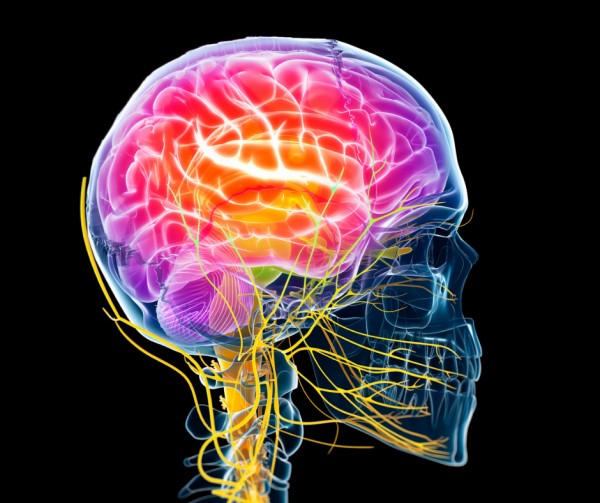It took - a trifle - four billion years. It took this long for the thinking and feeling human brain to evolve. And all because even the simplest single-celled organisms, living unimaginably long ago, had to solve the same problems that we also have to face today. It may be hard to believe, but our nervous system was created thanks to ... sponges. How was this process going?
Like most evolutionary events, the appearance of neurons did not happen suddenly. They developed gradually, through the small changes that took place during the transition from sponges to stinging birds.
In the beginning there was… a sponge
Adult sponges ... are sedentary creatures that generally remain attached to a solid substrate. In their youth, however, they had the ability to swim freely and moved a lot. The outer surface of the body of larval sponges is covered with protrusions called cilia that the young body uses to move around. The cilia are attached to the cells (one per so-called ciliary cell). They resemble flagellates cells.
There are two types of ciliated cells in different places in a young sponge. Short cilia are found in the swimming cells that cover most of the larva's body surface. The constant beating of these cilia causes random, unfocused movements which make the larva move around . Long cilia, on the other hand, are housed in control cells concentrated at one end of the body. They are sensitive to light (…). Cilia disappear as the sponge reaches adulthood.

The above text is an excerpt from the latest book by Joseph LeDoux, "The History of Our Consciousness", which has just been published by the Copernicus Center Press.
Gaspar Jekely proposed a fascinating hypothesis about how the cilia-based swimming of the sponge larvae paved the way for the appearance of neurons in stinging beetles. According to Jekely, neurons evolved first to improve sensorimotor integration.
Recall that dinoflagellates, which are closely related to the protistic ancestor of sponges, must detect light, swim, and control movement (as well as eat and reproduce) with only one cell. Sponge larvae have the advantage of having many cells, and their genes can distribute tasks among individual cells.
By separating light detection from general motion control, the sponge larvae separated sensory functions from swimming functions. However, a problem arose. Sensory cells cannot affect swimming cells quickly because they are located elsewhere in the body and chemical communication is too slow for that. The solution was that cells with short cilia kept the larva in constant chaotic motion, and sensory cells with long cilia, in addition to sensing stimuli, also took responsibility for steering, which is a less demanding task than swimming.
The neuron was not built in a day
However, this turned out to be ineffective compared to what the neurons ultimately made possible. So how did neurons and synapses develop?
According to Jekely's hypothesis, the transformation took place in a few steps: the first hypothetical change was the clustering of sensory and motor cells close to each other instead of in different parts of the body (as in the light sensing / control cells and swimming cells). Chemicals secreted by sensory cells could diffuse into neighboring motor cell bodies and coordinate their activity, which worked at short distances.
Then, the body of the sensory cell developed an appendage, thanks to which the chemicals it secreted could influence the motor cells located further away. This helped to some extent overcome the spatial limitations of chemical diffusion between cells, but with the extension of the spike a further limitation emerged - communication was still based on slow chemical diffusion in the appendages of the sensory cell.
The solution was to use fast electrical communication within the appendages that became axons, followed by slow chemical communication to bridge the short gap between the sensory and motor cells. As a result, the distance between the sensory and motor cells became less important and cells in one part of the nervous system could communicate with cells in other parts of the body regardless of their distance.
Action:mutation
We usually think of evolution in terms of how it affects the bodies of adults. Therefore, it is difficult for us to imagine how the hydra and discus were developed from sponges. The process will become more understandable when we realize that both sponges and stingrays go through the ciliated larvae stage and then develop into a pitcher polyp. In other words, the genetic modification of the sponge's development pattern could, by natural selection, have resulted in the development of a larva which matured in the form of a polyp, which in turn was the starting point for the evolution of stingbirds.
The early stages of life tend to reflect a species' relationship with its evolutionary ancestors better than the body form of an adult individual. This is because natural selection alters the way genes construct organisms during individual development. When developmental mutations are favorable, they become more common in a population, and when a given trait is acquired by a sufficiently large number of individuals, Bauplan it changes so much that a new species or even type arises. The close relationship of early development with evolution is of interest to the evolutionary biology of development, the so-called evo-devo .

Natural selection alters the way genes construct organisms during individual development.
There is another important thread in the history of how the sponges gave us the nervous system . Well, while sponges themselves do not have neurons, they do have what Seth Grant calls basic protosynaptic elements. More specifically, they have genes that, in later animals, are responsible for the presynaptic site (for example, the genes encoding proteins that make up the structures that store neurotransmitters in packages before being released into the synaptic cleft) and for the postsynaptic site (for example, genes encoding receptors that bind released neurotransmitters) as well as genes encoding adhesion molecules used to stabilize the formed synaptic junctions.
Why did the sponges fail to develop synapses despite having these key ingredients? They seem to lack molecular signals that in a coordinated manner trigger gene expression in the early stages of development, whereby the nervous system can arise.
In the absence of such a genetically encoded developmental program guiding the combination of presynaptic and postsynaptic elements, it was impossible to precisely control behavior in response to sensory information. Merely connecting and sticking adjacent cells is not enough to create an animal brain. Developing synapses specialized in transmitting visual, tactile or taste signals, or capable of directing movements of particular parts of the body or the entire body to or from a specific stimulus, requires a precise architecture of connections between cells.
Playing on the nerves
It is especially fascinating that some of these basic protosynaptic elements are also found in flange flagellates. Neither these protists nor the sponges had idle times to be used to form neurons and synapses, but served other purposes. When it came time to create synapses between neurons to solve the problem of communication between different parts of the body, existing elements were used for this . And once these elements were harnessed by sting beetles for synaptic transmission, they retained this role in all subsequent animals.
The nervous system of the sting beetles is rudimentary, mainly composed of a simple neural network - a diffuse collection of neurons scattered throughout the outer layer of skin-like tissue. (An interesting detail:the relationship between skin and neurons, where both neurons and skin cells develop from the ectoderm layer of a developing embryo, has been preserved in vertebrates like us.)
Like all subsequent nervous systems, the neural networks of stingers are essentially sensorimotor integration systems that perform three basic tasks. First, they receive messages from sensory receptors that are sensitive to light, touch, the force of gravity, or chemicals. Second, they select and process sensory messages. Third, they produce motor commands that control muscle activity.

It may be hard to believe, but our nervous system was created thanks to… sponges.
This allows different parts of the body to react as a single entity. However, the neural network does not allow for the precise localization of the motor response. Hydra reacts in the same way regardless of which part of the body is in contact with the stimulus.
Polyp-shaped stews, such as hydrae, generally have only a diffuse network of nerves, while in jellyfish-shaped discs, neurons also aggregate into clusters. For example, some neurons form a nerve ring around the jellyfish's umbrella, which controls its movements during fast swimming; others are concentrated in antennae and control free swimming and capture of prey and sperm transfer during sexual reproduction. These different local sets of neurons therefore allow a more precise response to stimulation than the neural network itself.
Science has not gone to the forest
According to Detlev Arendt and colleagues, genetic discoveries indicate that clusters of neurons in the umbrellas and mouths of discus are the precursors of the more complex body and brain plans characteristic of bilateral symmetrical animals that evolved from stinging beetles. The umbrella cluster appears to be the precursor of a specialized set of neurons that appeared in the head region of most Metazoa (in other words, a precursor to what we know as brains). Another cluster, located around the mouth and antennae, may have elongated into the later nerve trunk that connects the brain to the rest of the body (in vertebrates it is the spinal cord).
The process described here shows that neurons were born out of the need for communication between sensory and motor cells . We previously defined the nervous system as a device that combines sensory and motor aspects, but now we can expand on this definition by saying that it is a collection of cells that lie between the sensory and motor cells of the body and coordinate the body's muscle movements in response to sensory stimuli. In some organisms, neuronal mediation is relatively simple (such as in the stingray nerve networks) and in others it is extremely complex (such as in the vertebrate brain). The great pioneer of neurobiology, Sir Charles Scott Sherrington, put it this way:"The brain seems to be a trunk for nervous activity on its way to a moving animal."
But if nervous systems existed only to transmit information from point A to point B, behavior would be limited to simple innate responses. One of the great advantages of the nervous system is that it is easy to modify neurons as the organism interacts with its environment. This ability, called synaptic plasticity, is the foundation of learning.
It has been suggested that a key factor in the Cambrian explosion of animal bodies was the emergence of nervous system-based learning. While organisms without a nervous system can learn (recall the ability to learn unicellular microbes), it is thanks to the nervous systems that learning has become much more more complex and flexible .

The above text is an excerpt from the latest book by Joseph LeDoux "The History of Our Consciousness", which has just been published by the Copernicus Center Press.
And this modernization of the survival toolkit may have diversified bodybuilding plans. For example, neural learning may have enhanced the ability to acquire new niches, and this would result in changes to bodily features essential for survival. Also, since both predators and prey were able to learn, it would accelerate an evolutionary arms race resulting in unprecedented modifications to physical traits. And further diversification of body plans has, over time, increased the role of learning in survival skills.Source:
The above text is an excerpt from the latest book by Joseph LeDoux "The History of Our Consciousness", which has just been published by the Copernicus Center Press.
